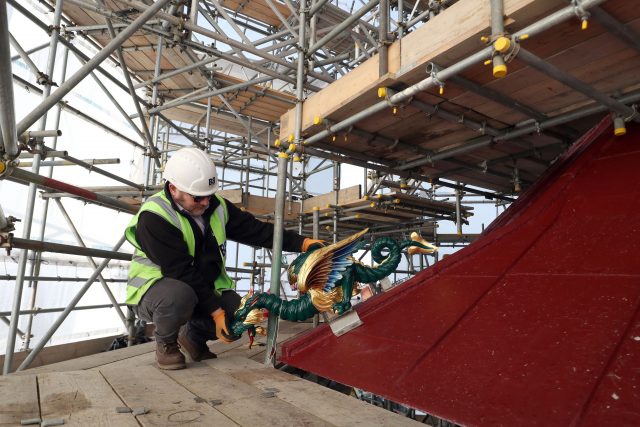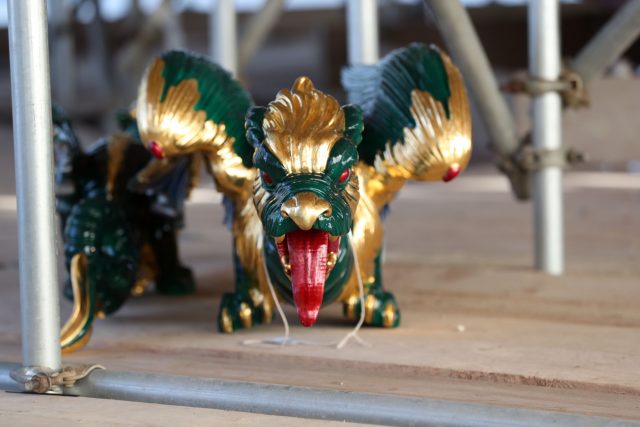Dragons breathe new life into pagoda at Kew Gardens
Craftspeople are hand-carving eight 2m-long dragons from cedar wood.

The finishing touches are being put to the dragons which are returning to the Great Pagoda at Kew Gardens.
It comes after a two-year and £4.5 million restoration of the unusual Georgian 10-storey octagonal tower in south-west London which is famed for its bird’s-eye view, Historic Royal Palaces (HRP) said.
It stands at almost 50m and each level is 30cm narrower than the one below, but none of the 80 brightly-coloured wooden dragons which dressed the pagoda when it was built in 1762 survived.

The replacement dragons are now being put back but 72 of them, which will feature on the upper levels, have been 3D laser-printed.
Craftspeople are hand carving the eight larger and heavier 2m-long dragons from cedar wood which will sit on the bottom level.
The Great Pagoda was designed by Sir William Chambers and completed in 1762 as a gift for Princess Augusta, the founder of the botanic gardens at Kew.

Researchers used contemporary accounts and drawings and inspiration from surviving 18th century dragons in houses and museums across Europe to create the new-look dragons.
Craig Hatto, of HRP, said: “It has been fascinating to piece together the story of the elusive dragons, missing from this remarkable building for over two centuries.”
Gilding work is being done on the building, and finishing touches are being made to the top of the pagoda before scaffolding comes down and the dragons are put back in place, according to HRP.

Ensuring the building is structurally sound, new copperwork, and restoring the pagoda to its original design are among the work which has been done.
The pagoda is to set to open to the public permanently from May/June 2018.





